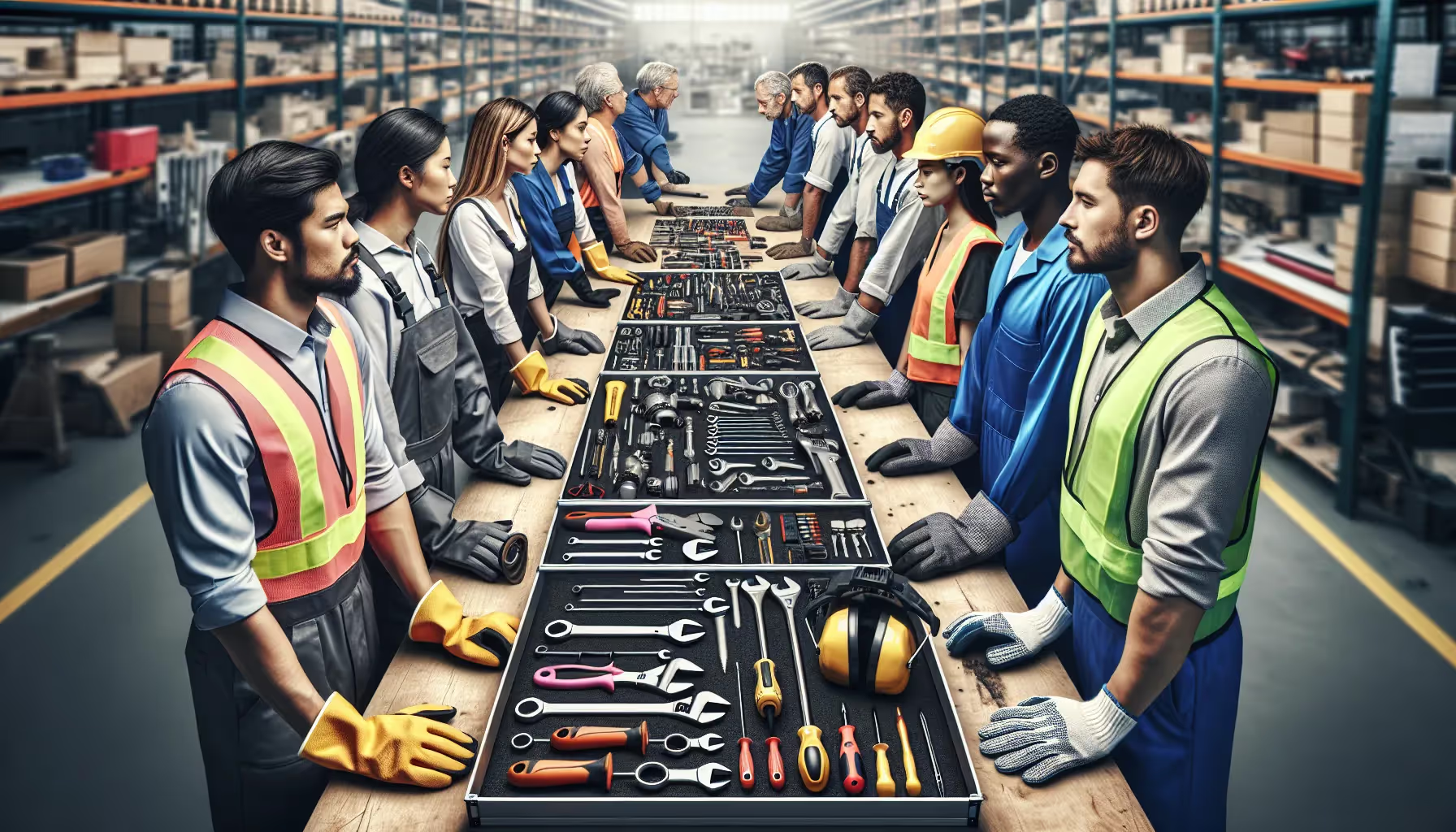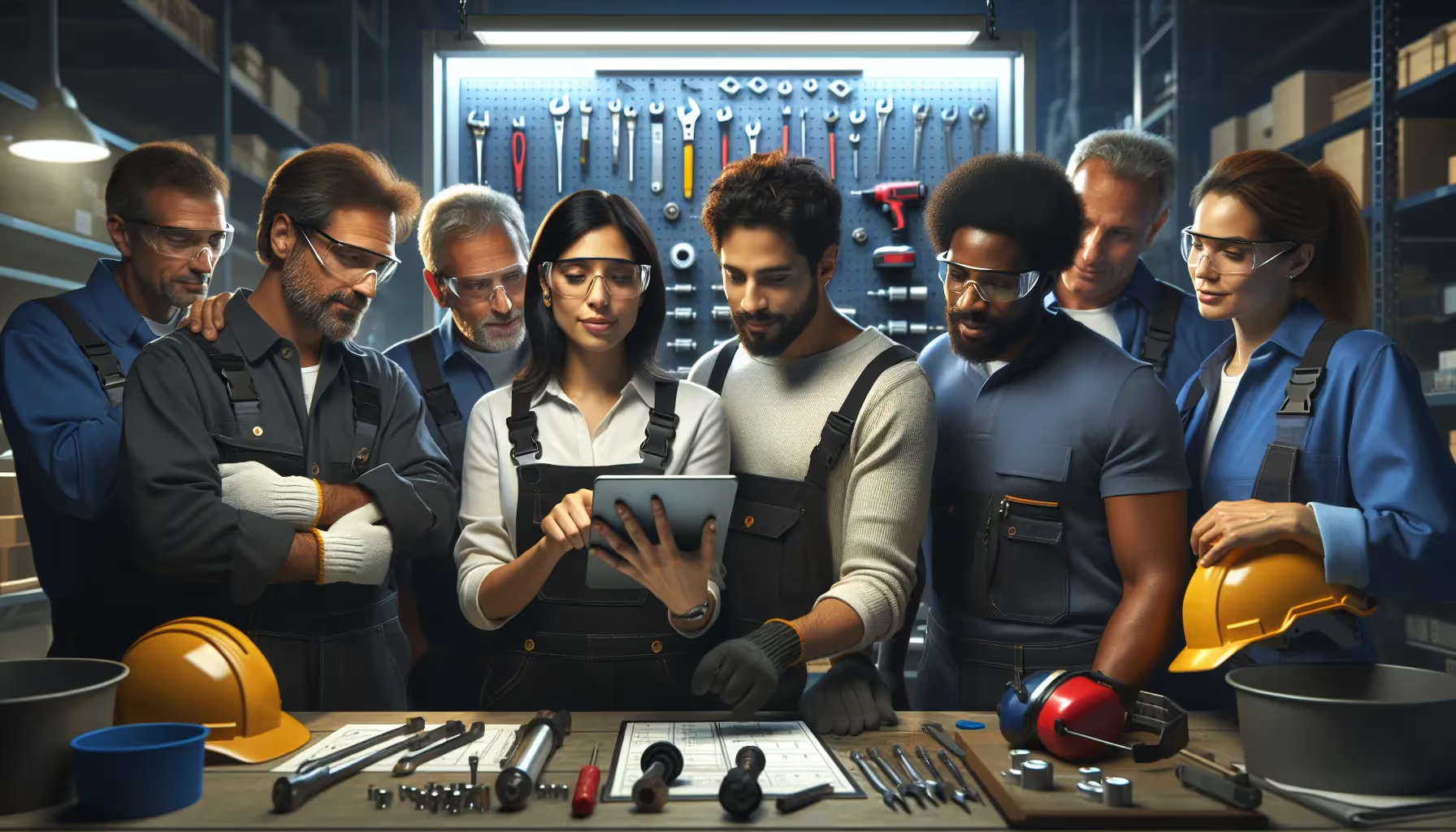Key Takeaways
- Importance of Tool Upgrades: Regular tool upgrades are crucial for enhancing technician performance and ensuring workplace safety, contributing to up to a 25% productivity increase.
- Evaluating Current Tools: Assessing existing tools for efficiency and safety risks helps identify areas that require upgrades, ultimately leading to a more effective and secure work environment.
- Budgeting for Upgrades: Strategic budgeting involves estimating costs and aligning resource allocation with technician input, helping maximize the impact of upgrades while controlling expenses.
- Creating a Regular Upgrade Schedule: Establishing a routine for tool upgrades ensures that technicians always have access to modern, effective equipment, improving both performance and safety.
- Employee Engagement: Involving technicians in the upgrade process fosters a sense of community and morale, leading to better performance outcomes and satisfaction in the workplace.
- Long-Term Savings: Investing in upgraded tools not only enhances immediate productivity but also promotes long-term savings through reduced maintenance costs and improved efficiency.
In today’s fast-paced work environment, having the right tools is crucial for technician performance and safety. Did you know that companies that invest in regular tool upgrades see a 25% increase in productivity? As we strive for efficiency and effectiveness, planning and budgeting for these upgrades becomes essential.
By understanding the importance of keeping our tools up to date, we can ensure our technicians are equipped to tackle challenges head-on. Regular upgrades not only enhance performance but also significantly reduce the risk of accidents, leading to safer work environments. Let’s explore how we can strategically plan and allocate resources for these vital investments.
Understanding the Importance of Tool Upgrades
Regular tool upgrades play a vital role in boosting technician performance and maintaining safety standards. Investing in updated equipment leads to better outcomes for our teams and our customers.
Impact on Technician Performance
Tool upgrades significantly influence technician efficiency. We see improvements when technicians use modern tools that are both effective and user-friendly. For instance, having technician scheduling tools integrated with field service management software minimizes delays. When technicians can easily access information, productivity often increases by at least 25%.
Let’s think about this: would you prefer using a smartphone from the early 2000s or the latest model? Just as outdated phones struggle to keep up with demands, so do outdated tools in the field. Upgrading tools keeps our workforce capable and engaged. As mobile field service apps evolve, they streamline technician tasks, making their jobs smoother.
Enhancing Safety Standards
Tool upgrades aren't just about performance; they also boost safety. Newer tools incorporate advanced features that minimize risks. When technicians work with reliable equipment, the chances of accidents drop significantly. It’s similar to driving a car with well-maintained brakes versus an older model with questionable stopping power.
Utilizing service business software equipped with safety features fosters a culture of care. As our teams operate with improved tools, we support their well-being. When safety becomes the norm, not the exception, it uplifts team morale and reinforces community.
We've all heard a horror story or two about unfortunate accidents that could've been avoided with better tools. Let’s choose to be proactive. Upgrading tools guarantees that our technicians are equipped to handle any challenge. Taking these steps today helps create a secure environment for everyone, including our customers.
Assessing Current Tools and Needs

Assessing our current tools and needs is crucial for improving technician performance and safety. A thorough review helps us identify areas for upgrades.
Evaluating Tool Efficiency
Evaluating tool efficiency means taking a close look at how well our tools perform. We pay attention to workflow bottlenecks that slow us down. By analyzing every tool's impact on our tasks, we can find which ones are genuinely helping us. For instance, using the right technician scheduling tools can cut travel time and boost productivity. Tools that are easy to use and durable also play a significant role in enhancing our overall output. Regular performance reviews help us track metrics that highlight tools needing replacement or upgrades. Keeping our toolkit efficient means we focus on what works best!
Identifying Safety Risks
Identifying safety risks is essential for maintaining a safe workplace. We assess tools that may pose hazards due to wear or outdated technology. Analyzing incident reports and feedback from our technicians helps us pinpoint specific safety concerns. Sometimes, it’s not just about replacing tools but upgrading to models with better safety features. Even simple ergonomic changes can make a significant difference. By being proactive in our assessments, we reduce the chances of accidents, creating a safer environment for everyone. If we spot potential issues early, we can prevent bigger problems down the line.
Regular assessments keep us ahead of the game, ensuring that our teams stay equipped and our workplace remains safe.
Creating a Budget for Tool Upgrades

Budgeting for tool upgrades involves strategic planning and smart resource allocation. Regular upgrades boost technician performance and safety, creating a positive environment for our teams.
Estimating Costs of Tools
To budget effectively, we start by estimating the costs of tools. We assess current tools' condition and performance. This evaluation helps identify what needs replacing or upgrading. Next, we research new tools by gathering vendor quotes and market prices. We also review historical data on our past spending on tools and maintenance. This historical perspective offers insights into trends and spending patterns. According to industry experts, organizations that properly assess their needs can cut costs by up to 15%.
For example, leveraging field service management software can streamline our budgeting process. These solutions help us forecast expenses by providing up-to-date cost information. We align our budgeting with modern practices to ensure our technicians remain efficient and safe. Investing in tools with advanced features can lead to substantial long-term savings, making it worth the upfront costs.
Allocating Resources Effectively
Effective resource allocation maximizes the impact of our budget. We identify priorities based on technician feedback and performance metrics. Engaging with our team helps us understand which tools truly enhance their work. It’s important to involve stakeholders in discussions—after all, who knows our technicians’ needs better than they do?
We also clearly define the scope of our budget. This involves outlining which specific upgrades are necessary and including maintenance costs. Planning for upgrades shouldn't feel overwhelming; it should be straightforward and transparent.
For instance, mobile workforce management solutions streamline technician scheduling and dispatching. These tools enhance our resource allocation, leading to improved service delivery. Plus, they assist in optimizing technician routes, reducing travel times and fuel costs. Engaging our team in the budgeting process fosters a sense of community. It ensures our tool upgrades resonate with the practical needs of our workforce, boosting both morale and productivity.
Developing a Regular Upgrade Schedule

A regular upgrade schedule helps optimize technician performance and safety. It involves strategic planning and careful budgeting to keep tools current and effective.
Factors to Consider for Upgrades
We must prioritize certain factors when planning upgrades. First, technician feedback plays a vital role. Gathering input from our technicians helps identify what improvements enhance their daily tasks. Safety improvements rank high. It’s crucial to focus on tools that significantly boost safety features or mitigate risks associated with outdated equipment. Standardization also matters. Implementing uniform solutions controls costs, reduces confusion, and simplifies training. Upgraded tools, like modern mobile field service apps, streamline processes and lead to better outcomes in our service delivery and customer engagement.
Setting Reminders and Tracking Progress
We establish reminders and track progress for efficient upgrade management. Regular stakeholder communication keeps everyone on the same page. Real-time updates about the upgrade process help us address concerns promptly. We can assign specific milestones for our upgrade schedule, making it easier to adjust as needed. Evaluations after the upgrades assess if our goals were met. These evaluations help identify areas for improvement and ensure we are on the right path. Emphasizing automation, like using technician scheduling tools or service dispatch software, enhances our tracking efforts. By adopting these strategies, we not only streamline the upgrade process but also foster a sense of community among our team and keep morale high.
Conclusion
Investing in regular tool upgrades is essential for enhancing technician performance and safety. By prioritizing these upgrades we not only boost productivity but also create a safer work environment. The strategic planning and budgeting process we've discussed ensures that resources are allocated effectively and that our teams are equipped with the best tools available.
Engaging technicians in this process allows us to address their needs directly and fosters a culture of collaboration. As we implement a regular upgrade schedule and utilize modern solutions, we can streamline operations and improve overall morale. Let's commit to making these upgrades a priority for the benefit of our teams and the safety of our workplaces.
Frequently Asked Questions
Why are regular tool upgrades important for technicians?
Regular tool upgrades are crucial as they significantly enhance productivity, potentially increasing output by 25%. Up-to-date tools improve performance, safety, and efficiency, leading to better outcomes for both technicians and customers.
How do tool upgrades affect workplace safety?
Tool upgrades improve workplace safety by reducing the risk of accidents through advanced safety features. Modern tools are designed to mitigate hazards, fostering a safe work environment and promoting a culture of care among team members.
What is the best way to budget for tool upgrades?
Creating a budget for tool upgrades involves assessing current tools, estimating costs of new options, and reviewing past spending. Engaging technicians in this process ensures that the upgrades align with their practical needs and priorities.
How can companies enhance technician performance with tool upgrades?
Companies can enhance technician performance by regularly assessing and upgrading tools to eliminate bottlenecks and inefficiencies. Modern, user-friendly tools lead to streamlined workflows and greater job satisfaction, which boosts overall productivity.
Why is technician feedback important in the upgrade process?
Technician feedback is essential in the upgrade process as it identifies necessary improvements related to safety and functionality. Involving technicians ensures that upgrades meet practical needs and enhance their work experience, leading to better performance.
What role does standardization play in tool upgrades?
Standardization helps control costs and simplifies training for technicians. By utilizing a consistent set of tools, companies can minimize confusion, enhance efficiency, and improve the overall effectiveness of their workforce.
How can automation tools assist in managing tool upgrades?
Automation tools, like technician scheduling and service dispatch software, streamline the upgrade process by managing tasks efficiently, tracking progress, and providing real-time updates. This fosters team morale and ensures upgrades are timely and effective.






